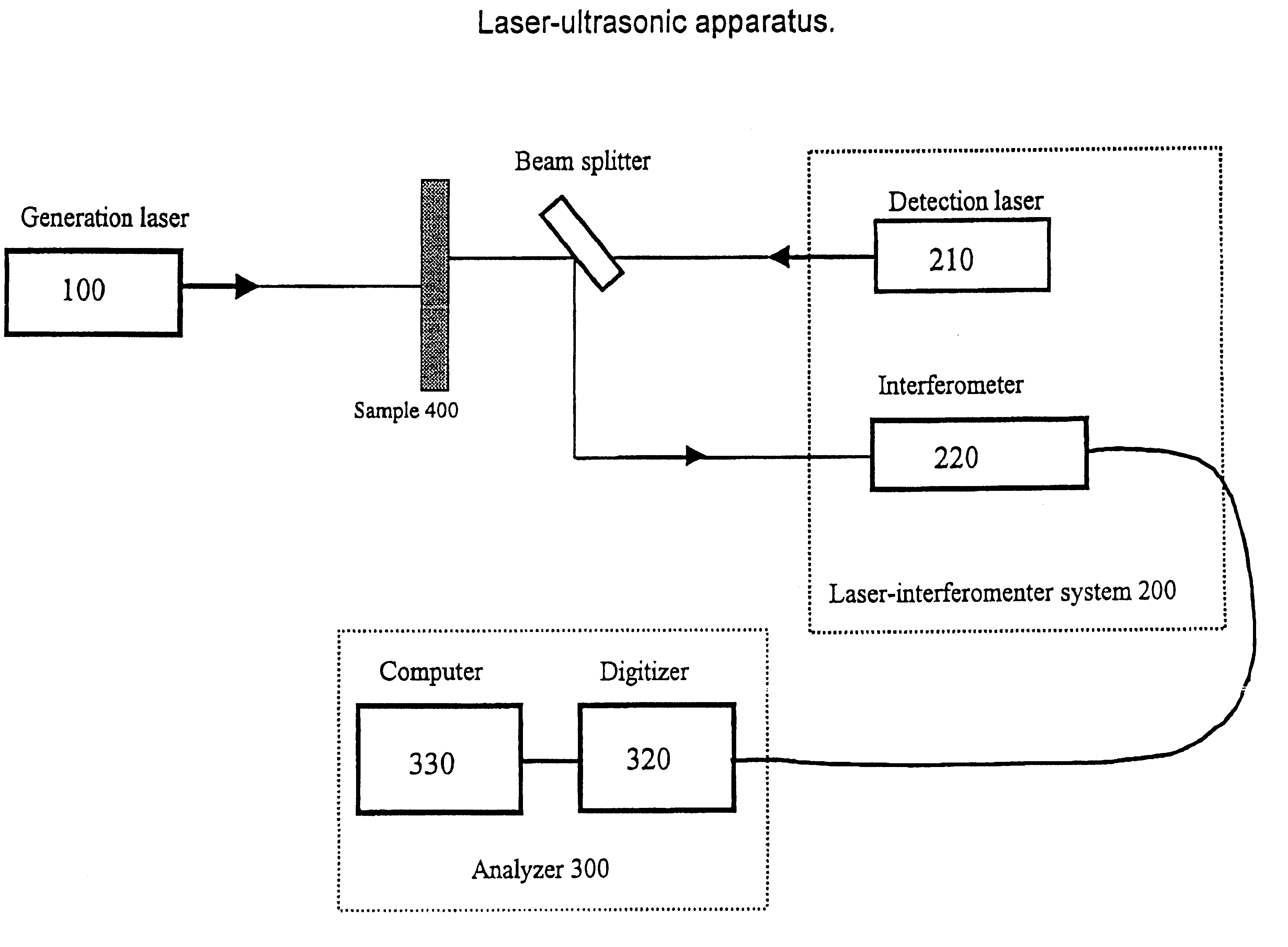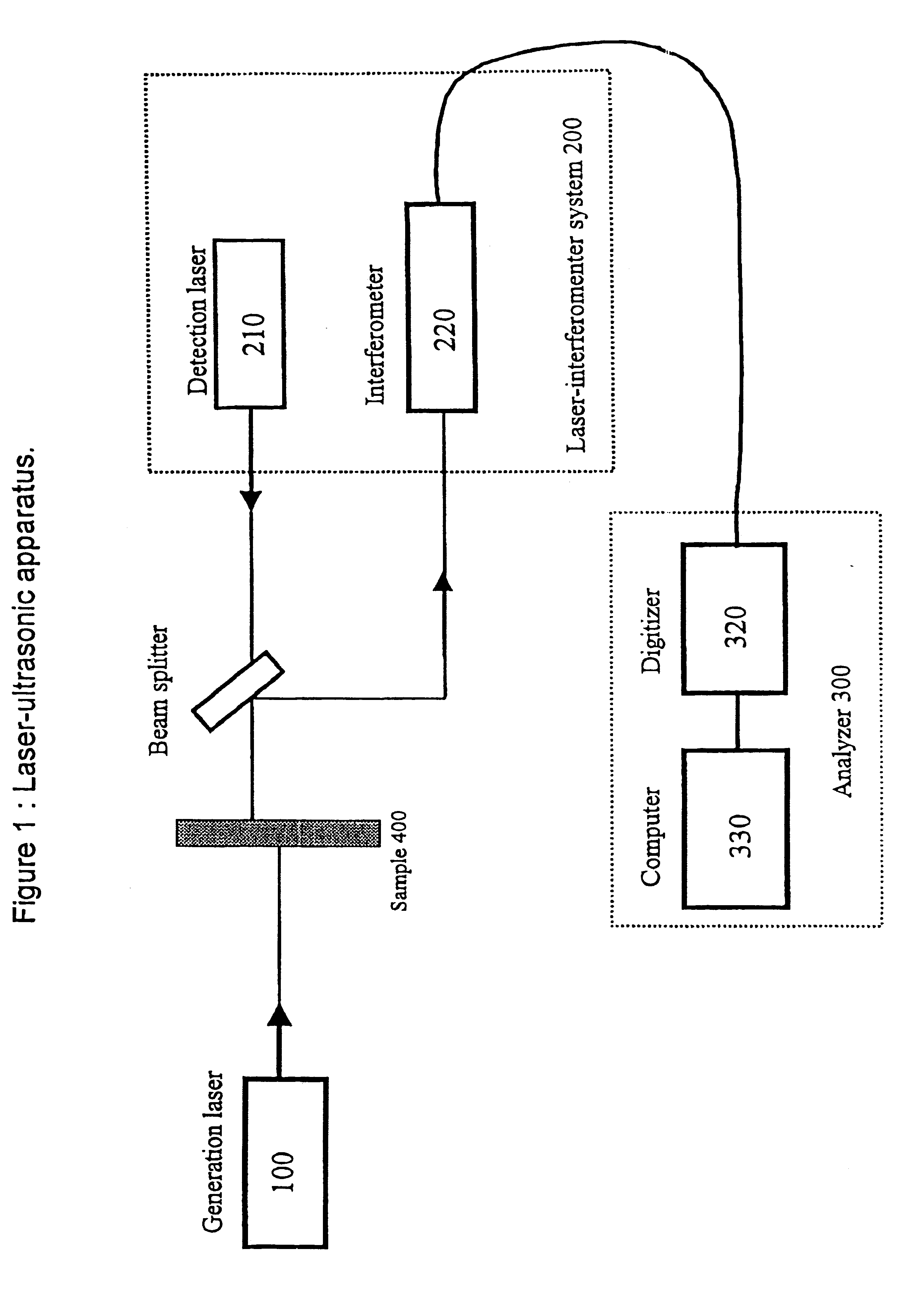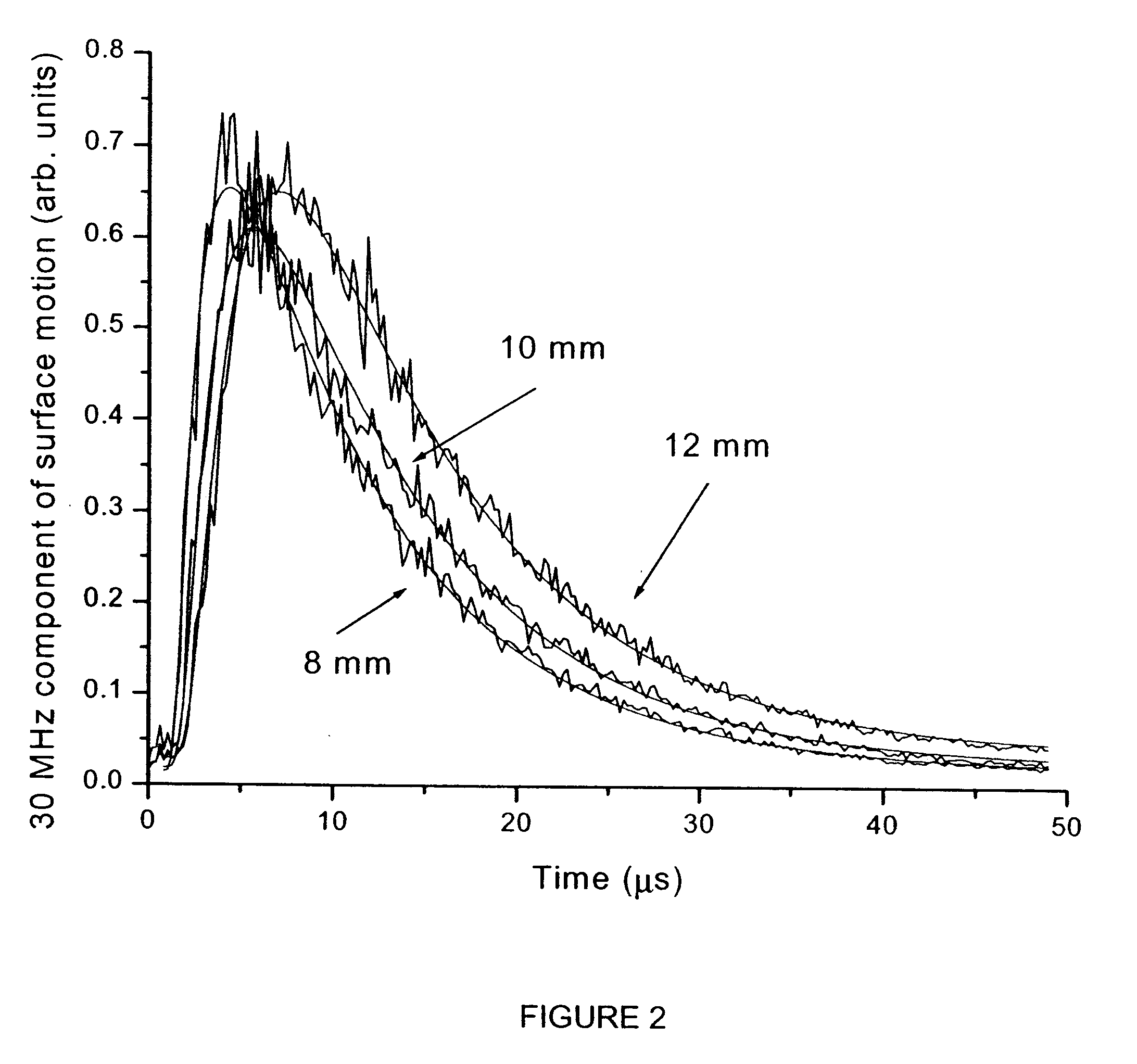Apparatus and method for evaluating the physical properties of a sample using ultrasonics
a physical property and ultrasonic technology, applied in the field of ultrasonics, can solve the problems of difficult separation of attenuation, time-consuming and laborious to perform a full study of absorption as a function of frequency and temperature, and both approaches are limited to samples
- Summary
- Abstract
- Description
- Claims
- Application Information
AI Technical Summary
Benefits of technology
Problems solved by technology
Method used
Image
Examples
example 1
ous measurement of the absorption and diffusion coefficients for a set of three measurement locations and intial conditions where the energy density follows a Gaussian distribution, and application to grain size measurement in steel.
As a first illustration of the use of the invention, it was applied to the evaluation of the absorption and diffusion coefficients of six steel sheets of grade LC. Equation (3) relating the grain size and the diffusion coefficient is also verified.
The ultrasonic pulse is generated by vaporizing a thin layer of oil on the surface of the sheet with a focused excimer laser pulse. After some scattering events, the ultrasonic pulse gives rise to a spectral energy distribution that is modeled by the following function:
U(r,t.sub.0,.omega.).varies.exp.left brkt-bot.-r.sup.2 / (2.sigma..sup.2).right brkt-bot., (6)
where the distribution width .sigma. and the initial time t.sub.0 are adjustable parameters. Due to the geometry of the sample, the sheet is modeled as a...
example 2
nt on the absorption coefficient alone with a single measurement and for initial conditions that can be approximated by a nearly constant energy distribution, and application to the measurement of yield strength in steel.
As a second illustration of the use of our invention, we apply it to cases where only the absorption coefficient is evaluated. We first show that the absorption coefficient is sensitive to the density of dislocation. We then demonstrate how the absorption coefficient can be used to estimate the yield strength of steel.
Interaction with dislocations is one of the main components of ultrasound absorption in the MHz range. Absorption coefficients were measured with our apparatus on seven thin steel sheets (30 cm.times.30 cm.times.1 mm) of grade ultra-low carbon. The samples were exposed to the exact same thermo-mechanical treatment except for various degrees of temper reduction (also called skin-pass). The degree of temper roll influences the density of dislocations. Ab...
PUM
 Login to View More
Login to View More Abstract
Description
Claims
Application Information
 Login to View More
Login to View More - R&D
- Intellectual Property
- Life Sciences
- Materials
- Tech Scout
- Unparalleled Data Quality
- Higher Quality Content
- 60% Fewer Hallucinations
Browse by: Latest US Patents, China's latest patents, Technical Efficacy Thesaurus, Application Domain, Technology Topic, Popular Technical Reports.
© 2025 PatSnap. All rights reserved.Legal|Privacy policy|Modern Slavery Act Transparency Statement|Sitemap|About US| Contact US: help@patsnap.com



